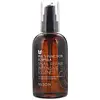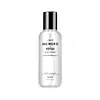What's inside
What's inside
 Key Ingredients
Key Ingredients

 Benefits
Benefits

 Ingredients Side-by-side
Ingredients Side-by-side

Water
Skin ConditioningMethylpropanediol
SolventSnail Secretion Filtrate
Skin ConditioningGlycerin
HumectantGlycereth-26
HumectantCarbomer
Emulsion StabilisingTromethamine
BufferingTrehalose
HumectantFructooligosaccharides
HumectantSaccharide Hydrolysate
HumectantEthylhexylglycerin
Skin ConditioningSodium Polyacrylate
Absorbent1,2-Hexanediol
Skin ConditioningPullulan
Propanediol
SolventAdenosine
Skin ConditioningDisodium EDTA
Centella Asiatica Extract
CleansingHouttuynia Cordata Extract
Skin ConditioningSalvia Hispanica Seed Extract
EmollientSodium Hyaluronate
HumectantHyaluronic Acid
HumectantPhenoxyethanol
PreservativeWater, Methylpropanediol, Snail Secretion Filtrate, Glycerin, Glycereth-26, Carbomer, Tromethamine, Trehalose, Fructooligosaccharides, Saccharide Hydrolysate, Ethylhexylglycerin, Sodium Polyacrylate, 1,2-Hexanediol, Pullulan, Propanediol, Adenosine, Disodium EDTA, Centella Asiatica Extract, Houttuynia Cordata Extract, Salvia Hispanica Seed Extract, Sodium Hyaluronate, Hyaluronic Acid, Phenoxyethanol
Snail Secretion Filtrate
Skin ConditioningBetaine
HumectantButylene Glycol
HumectantEthyl Hexanediol
SolventAllantoin
Skin ConditioningPhenoxyethanol
PreservativeSodium Polyacrylate
AbsorbentCarbomer
Emulsion StabilisingWater
Skin Conditioning1,2-Hexanediol
Skin ConditioningSodium Hyaluronate
HumectantPanthenol
Skin ConditioningAdenosine
Skin ConditioningArginine
MaskingCopper Tripeptide-1
Skin ConditioningPalmitoyl Pentapeptide-4
Skin ConditioningAcetyl Hexapeptide-8
HumectantPalmitoyl Tripeptide-1
Skin ConditioningPalmitoyl Tetrapeptide-7
Skin ConditioningSnail Secretion Filtrate, Betaine, Butylene Glycol, Ethyl Hexanediol, Allantoin, Phenoxyethanol, Sodium Polyacrylate, Carbomer, Water, 1,2-Hexanediol, Sodium Hyaluronate, Panthenol, Adenosine, Arginine, Copper Tripeptide-1, Palmitoyl Pentapeptide-4, Acetyl Hexapeptide-8, Palmitoyl Tripeptide-1, Palmitoyl Tetrapeptide-7
 Reviews
Reviews

Ingredients Explained
These ingredients are found in both products.
Ingredients higher up in an ingredient list are typically present in a larger amount.
1,2-Hexanediol is a synthetic liquid and another multi-functional powerhouse.
It is a:
- Humectant, drawing moisture into the skin
- Emollient, helping to soften skin
- Solvent, dispersing and stabilizing formulas
- Preservative booster, enhancing the antimicrobial activity of other preservatives
Adenosine is in every living organism. It is one of four components in nucleic acids that helps store our DNA.
Adenosine has many benefits when used. These benefits include hydrating the skin, smoothing skin, and reducing wrinkles. Once applied, adenosine increases collagen production. It also helps with improving firmness and tissue repair.
Studies have found adenosine may also help with wound healing.
In skincare products, Adenosine is usually derived from yeast.
Learn more about AdenosineCarbomer is a polymer of acrylic acid. Its main role is to create a gel consistency.
A high amount of carbomer can cause pilling or balling up of products. Don't worry, most products contain 1% or less of carbomer.
Phenoxyethanol is a preservative that has germicide, antimicrobial, and aromatic properties. Studies show that phenoxyethanol can prevent microbial growth. By itself, it has a scent that is similar to that of a rose.
It's often used in formulations along with Caprylyl Glycol to preserve the shelf life of products.
Snail Secretion Filtrate is the excretion from snails. It is an effective moisturizer and promotes collagen production.
A popular nickname for this ingredient is 'Snail Mucin'.
Snail mucin has numerous skin benefits:
On top of this, Snail Secretion Filtrate contains a variety of vitamins and minerals. These include copper peptides, Vitamin A, and vitamin E. Vitamins A and E are antioxidants. Antioxidants help fight free-radicals that damage skin cells.
Being cruelty-free means a brand does not experiment on animals.
If you're worried about the well-being of the snails, we recommend looking more into the company of the product. Many brands have developed humane methods to collect snail mucin.
There is much debate on this subject. On one hand, this ingredient comes from an animal. On the other hand, many will argue the ingredient is naturally secreted (like a natural by-product) and therefore vegan. If you have reservations, you can look into Galactomyces Ferment Filtrate or Centella Asiatica Extract as alternatives.
Learn more about Snail Secretion FiltrateSodium Hyaluronate is hyaluronic acid's salt form. It is commonly derived from the sodium salt of hyaluronic acid.
Like hyaluronic acid, it is great at holding water and acts as a humectant. This makes it a great skin hydrating ingredient.
Sodium Hyaluronate is naturally occurring in our bodies and is mostly found in eye fluid and joints.
These are some other common types of Hyaluronic Acid:
Learn more about Sodium HyaluronateSodium Polyacrylate is the sodium salt of polyacrylic acid. It is used as an absorber, emollient, and stabilizer.
This ingredient is a super-absorbent polymer - meaning it can absorb 100 to 1000 times its mass in water. As an emollient, Sodium Polyacrylate helps soften and soothe skin. Emollients work by creating a barrier to trap moisture in. This helps keep your skin hydrated.
Water. It's the most common cosmetic ingredient of all. You'll usually see it at the top of ingredient lists, meaning that it makes up the largest part of the product.
So why is it so popular? Water most often acts as a solvent - this means that it helps dissolve other ingredients into the formulation.
You'll also recognize water as that liquid we all need to stay alive. If you see this, drink a glass of water. Stay hydrated!
Learn more about Water